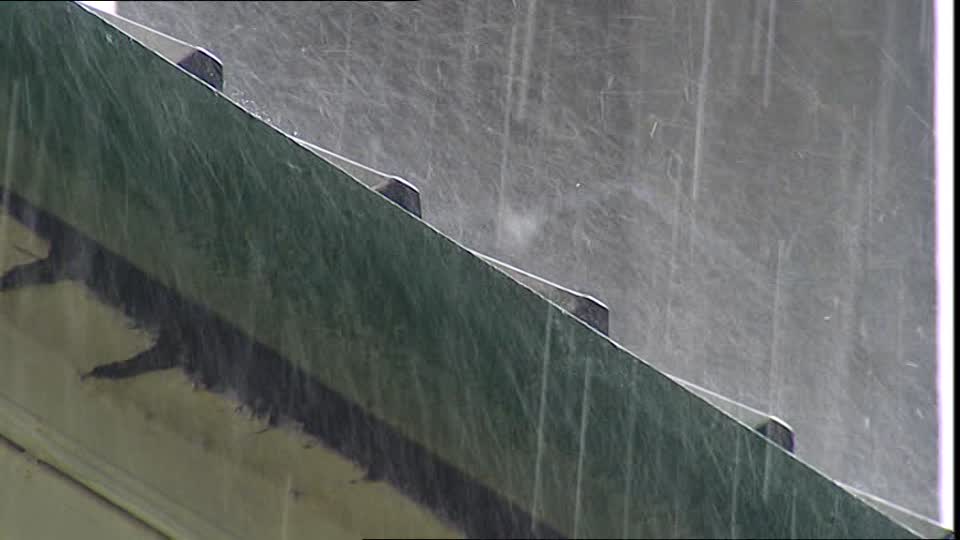Anglo-Saxon Church Eaves and Baby Burials May 11, 2015
Author: Beach Combing | in : Medieval , trackbackBurial customs are always interesting and often mysterious. Consider this one. In early medieval Britain, particularly, it seems in Anglo-Saxon regions, fetuses and children were regularly buried up against church walls or extremely close to the same. Archaeologists have long recognized that strange constellations of bodies appeared in Christian cemeteries in Anglo-Saxon England; there are some pretty interesting constellations among pagan Anglo-Saxon graveyards too. However, it is only recently that archaeologists have recognized this building-hugging tendency of the very young: at Castle Green (Hereford); Cherry Hinton (Cambs); Spofforth (North Yorks); Raunds Furnells (Northants); and Thwing (East Yorks) to name some of the principle sites and to give a sense of the range of the custom.
How did this work? Well, at Raunds Furnells some thirty bodies of baby (1 year or less) children were found close to the church wall. These were not all the children of this age in the cemetery. In fact, perhaps only about a third of children of this age were found there. But it was still a remarkable concentration. There were also some adults buried among them. In some cases these may have been mothers who died in childbirth or shortly afterwards: there is strong evidence for this in other cemeteries, though at Raunds they were very possibly chronologically distinct adult burials.
Where did this custom come from? The most charming answer, an answer that supposedly has a reflex in European folklore (be suspicious), is that the water running off the eaves of the church baptized or rebaptised the insecure Christians who had been dug in there. This is aesthetically satisfying but speculative. Other suggestions have included the notion that these were late burials of non-baptised children, who were not allowed to be buried in cemeteries, but who could be sneaked into completed graveyards. There is some demonstrably incorrect speculation about an inherited Roman custom (another post, another day). Beach, meanwhile, would like to think of these tykes as being dug into the holy manure as close to the church’s confines as possible to afford still greater protection from any saintly relics within: and buried in a team so that the community could be reconstituted perfectly on that day ‘where every book shall lie open to one another’. Any other thoughts on why these babies were so buried: drbeachcombing AT yahoo DOT com
The best thing read on this was: Elizabeth Craig-Evans, Eavesdropping on the dead eaves-drip burial and the zoning of women’s and children’s graves in cemeteries c. A.D. 650-1200
For previous post on Irish still born burials and for one long-suffering Anglo-Saxon baby follow the links.
19 May 2015: Invisible with an important point: I don’t think anyone has suggested foundation sacrifices and yet…
My first thought was this was a remnant of foundation sacrifices. The structure was already built, but put the infants as close to the foundation as possible–perhaps to accrue some kind of merit by a “sacrifice” of someone already dead? I don’t have access to the entire article you cited, just the abstract, but what is the earliest source for the belief that rain running off church roofs is sanctified? If this is a substitute for the holy water in the font, why were there font covers? Are there not similar burials by houses? Apparently the same custom is recorded (1906) in New Mexico, where it is called “Bautismo del Cielo.”
21 July 2015: JP writes ‘These burials feel like something family members would do to protect their child. Burying a little baby in a large cemetery almost feels like tossing a pebble into a rolling sea. I found this piece re; burial customs. The author suggests that these burials – babies near church walls (and cemetery walls) are performed in secret by family. They’re not officially sanctioned by the church because the baby is unbaptized. Whether or not this is correct, the writer certainly adds a few more pieces to an otherwise fascinating puzzle.’
30 April 2016: Chris from Haunted Ohio Books: I was leafing through some of my Paleopathology Newsletter back issues and found this in a notes and queries section. I remembered your post on infants buried “under the eaves.” Perhaps she has an article with theories/more information. ‘Infant Burials Outside the Walls: A Deviant Behavior? (Chryssa Bourbou, Khania, Crete,Greece; [e-mail given, but may be outdated] During a recent excavation in ancient Aptera (Crete, Greece), a number of subadult burials came to light outside the fortification walls of the city. A preliminary study of some of the burials demonstrated that they belonged to newborn or stillborn infants. The burials, dating to the 4th century BC, were carefully prepared, with abundant accompanying grave goods as well as traces of burial rituals. To my knowledge, in Greek or other contexts, no such burials (subadult burials outside fortification walls) have been reported. Do you happen to know of any similar deposits? And if so, how do you interpret this unusual type of burial–i.e., an epidemic? socio-cultural implications of unwanted children? the symbolic role of children in ancient society? an attempt to place diseased children outside the borders of the city? If you have heard of any similar cases or have any suggestions for interpretations… Paleopathology Newsletter December 2005’



